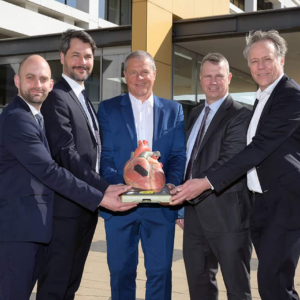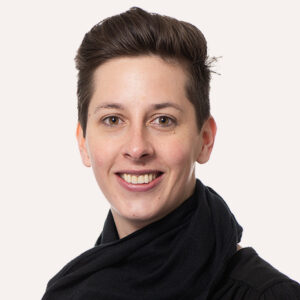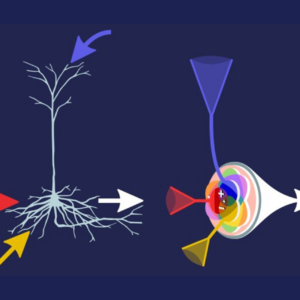07.04.2025
Mit der Unterzeichnung eines Beteiligungsvertrags am 2. April 2025 haben die Göttinger Biotechnologiepioniere Repairon GmbH und der Life Science-Investor Bioventure Management GmbH eine strategische Partnerschaft besiegelt, die das Potenzial hat, die Behandlung von Herzinsuffizienz weltweit grundlegend zu verändern. Bioventure beteiligt sich als Investor an Repairon – einer Ausgründung der Universitätsmedizin
07.04.2025
Modulation of protein activity by small RNA base pairing internal to coding sequences
Authors Thongdee N, Alaniz MM, Samatova E, Zhong A, Esnault C, Zhang H, Dale RK, Rodnina MV, Storz G Journal Molecular Cell Citation Mol Cell. 2025 Mar 30:S1097-2765(25)00258-8. Abstract Most characterized interactions between bacterial small RNAs (sRNAs) and their target mRNAs occur near ribosome binding sites, resulting in changes in
04.04.2025
Recent developments in multiple sclerosis neuropathology
Authors Stadelmann C, Franz J, Nessler S Journal Current Opinion in Neurology Citation Curr Opin Neurol. 2025 Apr 4. Abstract Purpose of review: Neuropathological studies in human brain tissue are indispensable for our understanding of disease mechanisms in multiple sclerosis (MS). They inform concepts of lesion evolution, tissue regeneration and
03.04.2025
Nadja Simeth-Crespi als W2-Professorin für Molecular Labeling Chemistry ernannt
Herzlichen Glückwunsch an Nadja Simeth-Crespi zu ihrer Ernennung als W2-Professorin für Molecular Labeling Chemistry an der Universität Göttingen. Prof. Simeth-Crespi und ihr Team erforschen die Schnittstelle bioorganischer und photochemischer Chemie mit einem Schwerpunkt auf dem Design von intelligenten Medikamenten, biochemischen Sonden und Markern sowie photoresponsiven supramolekularen Architekturen und biohybriden
02.04.2025
Power-law adaptation in the presynaptic vesicle cycle
Authors Mikulasch FA, Georgiev SV, Rudelt L, Rizzoli SO, Priesemann V Journal Communications Biology Citation Commun Biol. 2025 Apr 2;8(1):542. Abstract After synaptic transmission, fused synaptic vesicles are recycled, enabling the synapse to recover its capacity for renewed release. The recovery steps, which range from endocytosis to vesicle docking and
31.03.2025
Direct Stimulation of Gastric Smooth Muscle Cells via Gq Proteins With Light
Authors Zipf D, Vogt M, Sathyanarayanan U, Wagdi A, Riebeling J, Patejdl R, Bruegmann T Journal Neurogastroenterology and Motility Citation Neurogastroenterol Motil. 2025 Mar 31:e70028. Abstract Background: Optogenetics is a cutting-edge approach that can enable direct stimulation of gastric smooth muscle cells (SMC) by combining cell-specific overexpression of light-sensitive proteins
28.03.2025
Künstliche Neuronen organisieren sich selbst
Göttinger Forschungsteam konstruiert Netzwerk aus selbstlernenden infomorphic neurons Neuartige künstliche Neuronen lernen selbst und sind stärker ihren biologischen Vorbildern nachempfunden. Ein Team aus Forschenden des Göttingen Campus Instituts für Dynamik biologischer Netzwerke (CIDBN) der Universität Göttingen und des Max-Planck-Instituts für Dynamik und Selbstorganisation (MPI-DS), darunter MBExC Mitglied Viola Priesemann,
27.03.2025
Understanding mitochondrial protein import: a revised model of the presequence translocase
Authors Jain N, Chacinska A, Rehling P Journal Trends in Biochemical Sciences Citation Trends Biochem Sci. 2025 Mar 27:S0968-0004(25)00050-7. Abstract Mitochondrial function relies on the precise targeting and import of cytosolic proteins into mitochondrial subcompartments. Most matrix-targeted proteins follow the presequence pathway, which directs precursor proteins across the outer mitochondrial
26.03.2025
The inner nuclear layer in pediatric multiple sclerosis
Authors Hummel-Abmeier H, Naxer S, Kadas EM, Zimmermann H, Knaack B, Huppke P, Kowallick A, Meier K, Brandt AU, Paul F, Schittkowski M, Oertel FC, Gärtner J Journal Neurology: Neuroimmunology and Neuroinflammation Citation Neurol Neuroimmunol Neuroinflamm. 2025 May;12(3):e200387. Abstract Background and objectives: Pediatric onset multiple sclerosis (POMS) leads to optic
26.03.2025
Microtubules as a versatile reference standard for expansion microscopy
Authors Chowdhury R, Mimoso T, Chouaib AA, Mougios N, Krah D, Opazo F, Köster S, Rizzoli SO, Shaib AH Journal Communications Biology Citation Commun Biol. 2025 Mar 26;8(1):499. Abstract Expansion microscopy (ExM) is continually improving, and new ExM variants need to be validated on well-defined biological structures. There is no





